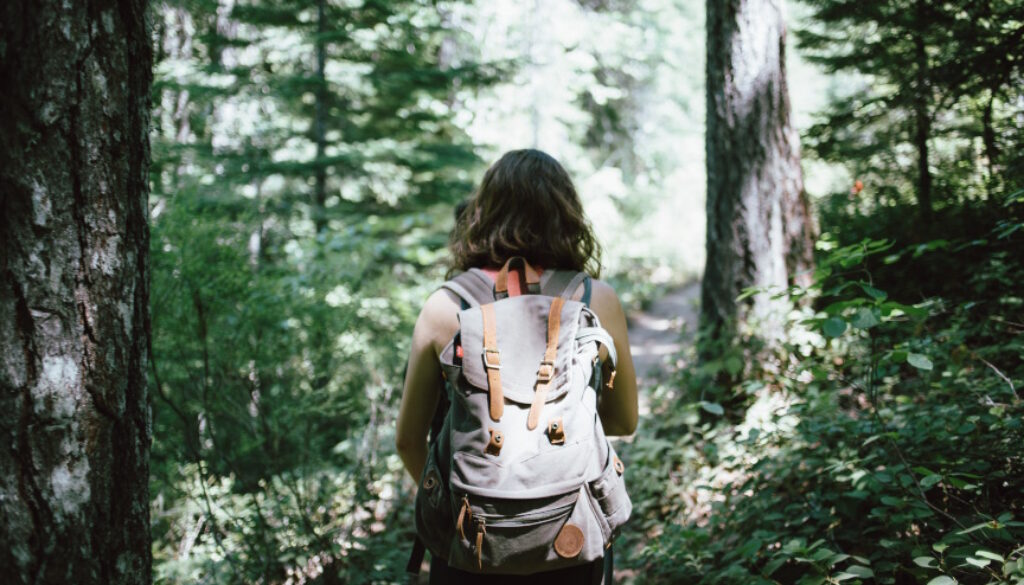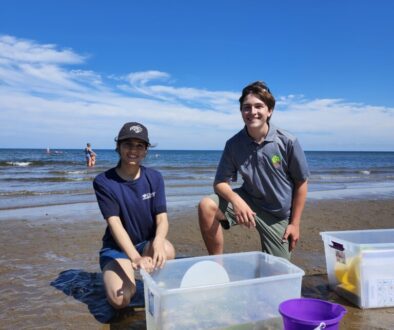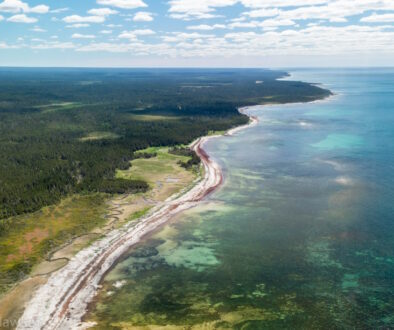Connecting With Nature Using All of Your Senses
Summer weather is here in New Brunswick, which brings many opportunities to get out and explore nature! There are so many different ways that we can connect to nature, but one of our favorite ways at CPAWS NB is to go on a ‘Five Senses nature walk’ and use all our senses to explore natural areas around us.
You might think you know all there is to know about in your favorite park, but when you take the time to slow down, you will be amazed at how many incredible details are hiding, that require just a little closer look. Whether you live along the coast, near a bog or wetland, or in the middle of the Wabanaki/Acadian forest, next time you’re out for a walk try these tips!
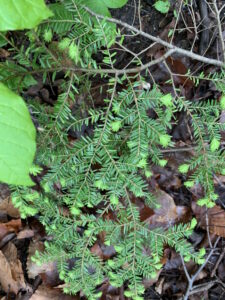 See
See
Sight is one of the most used senses, but we rarely take the time to take a closer look at the natural world around us. Next time you are out in nature, focus on the beautiful and intricate details of the plants, insects, and water around you.
While many trees might look similar at first glance, each tree species has its own unique characteristics to tell it apart from the others. You don’t need to be an expert to notice what makes the many trees in New Brunswick unique!
- Can you see the different shades of green on the trees? On many coniferous trees (trees with needles) the new growth each spring is a lighter or more vibrant shade of green, which will darken over the summer and rest of the year before it begins the new growth process over again.
- Taking a closer look at the bark will also reveal unique patterns that can tell you more about the tree’s health, growth and if there are any insects or animals living on or in the tree.
Looking at the plants around you, are you able to see the growth pattern of the flowers or leaves? Some plants will have leaves on each side, while others will grow in a spiral around the stem.
Consider bringing an identification book or use the iNaturalist app to ID the plants you have observed.
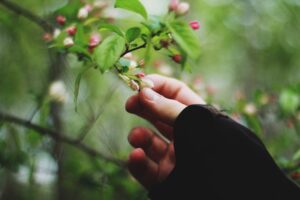 Touch
Touch
Our sense of touch is used less often when we are outside. However, there are many ways that you can use touch to explore and learn more about the nature around you!
If it is safe to do so, explore how the water feels on your hands or feet. What is the water temperature – is it the same temperature at the shore and when you are in deeper water?
Touch is also a great way to explore the trees around you:
- How do the leaves on deciduous trees feel?
- How do the needles on coniferous trees feel? Some needles can be soft while others are more pointy. Is there a difference feeling between older growth and the new growth on the tree?
- Can you feel the differences between the bark on the trees?
- Do any trees have sap or a sticky residue on their needles or bark?
When touching any plants or trees, be careful not to hurt the plant, remove and leaves or break of any branches or other parts of the plant. And it is important that you DO NOT touch any animals and give them lots of space!
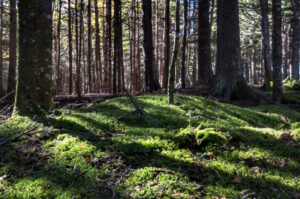
Photo by Eric Prouzet Smell
Our sense of smell can often be strong when we are out in nature, but with so many fragrant flowers, the smell of salt water near the ocean, or fresh buds of new growth on trees and plants, it can sometimes be hard to identify what we are smelling. Animals use their sense of smell to find food, to know if there is a predator or danger in the area, and to communicate with each other. And we can too!
Next time you are out in nature, take the time to get up close to smell different trees and plants.
- Can you smell the difference between different species of trees. Do deciduous and coniferous trees smell the same or different? Does the scent remind you of a favorite food, or holiday, or place you love to visit?
Animals can also leave behind a scent that can tell us they are near!
Finally, can you use your sense of smell to know how close you are to the ocean? Scent can bring back a lot of memories, and can remind us of past experiences outside, or help us to build new memories made in nature.
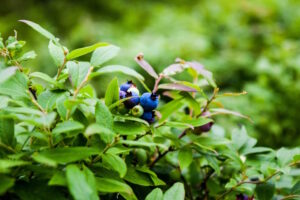 Taste
Taste
Exploring nature through your sense of taste can be a little trickier than the other senses. While there are many edible plants, others can make you sick, or are toxic for humans to eat.
Many different types of tree needles can be made into a tea and berries make a tasty snack along the trail.
Before you taste anything while you are out in nature, it is very important that you are 100% sure you know what it is, and if the plant is edible! If you want to explore your sense of taste, pick up an edible plants or foraging guide from your local library or bookstore.
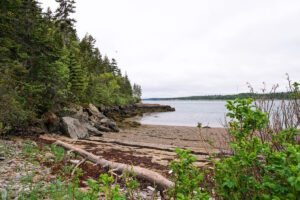
Photo by Kristen Hopkins Hear
Finally, next time you are out in nature take the time to focus on the sounds around you! Our days are often filled with human-made sounds, like cars, construction, or music, and it can sometimes be hard to hear the sounds of nature around us. Pick a spot to be still and just listen to what is around you.
You might hear different animal calls. Depending on the type of habitat you are in, you might hear insects, birds, frogs, or larger animals like moose or coyotes. Each species has its own distinct call to be able to communicate with others, find a mate, and warn about danger in the area.
Can you identify what type of birds or frogs you might be listening too, based on their calls? Helpful apps like the Merlin app that can help you identify what birds are around!
What other sounds can you hear that you might not pick up at first?
- What does the wind sound like amongst the trees?
- Can you hear any water flowing or crashing into the shore?
- Are there any animals moving around you? Can you hear how they move through the forest?
There are so many sounds we naturally tune out, and you might even experience the sounds of nature becoming louder the longer you listen.
Conclusion
This summer, take some time to explore the natural areas around you in a new way! If you go on a Five Senses walk, share your discoveries by tagging @CPAWS NB.
Follow CPAWS NB on social media for more ideas on how you can explore the nature around you, learn more about NB wildlife, and learn about ways that you can take action to help natural areas in New Brunswick.

